The Enzyme-Linked Immunosorbent Assay (ELISA) is one of the most widely used techniques in laboratories for detecting and quantifying substances such as proteins, peptides, antibodies, and hormones. Central to the ELISA process is the microplate reader, an instrument that plays a pivotal role in determining the results. Ensuring that the ELISA microplate reader delivers high sensitivity and accuracy is essential for achieving reliable and precise results. This article explores the importance and various strategies to improve the the sensitivity and accuracy of ELISA microplate readers.
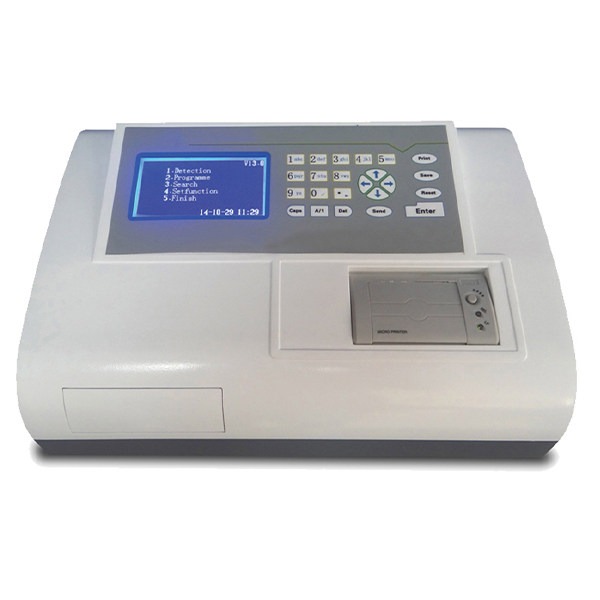
Why Improving the Sensitivity and Accuracy of ELISA Microplate Reader are Important
- Enhanced Detection of Low-Concentration Targets: Many ELISA assays involve detecting low concentrations of antigens or antibodies. Improved sensitivity allows for the detection of these low levels, ensuring that important biological signals are not missed.
- Increased Reliability of Results: Higher accuracy ensures that measurements are closer to the true values, minimizing errors in quantitative results. This is vital for clinical diagnostics, research, and applications where precise measurements are critical.
- Better Discrimination Between Samples: Higher sensitivity and accuracy enable the differentiation between closely related samples or minor variations in target concentration, which can lead to more accurate conclusions.
- Faster Data Analysis: With improved sensitivity, fewer false positives or negatives occur, which accelerates the process of obtaining actionable data. This is especially beneficial in high-throughput settings.
- Cost-Effectiveness: With more accurate measurements, the need for repeat tests due to errors or inaccuracies is reduced, saving both time and resources.
- Broadens Application Range: Improved sensitivity and accuracy expand the range of assays that can be performed, making the ELISA microplate reader suitable for a wider variety of research and clinical applications.
- Regulatory Compliance: In regulated environments, especially in medical diagnostics and pharmaceutical research, more precise measurements are often required to meet industry standards and compliance requirements.
- Improved Data Reproducibility: Sensitivity and accuracy improvements contribute to more consistent and reproducible results, which are critical for scientific validity and reliable comparisons across studies.
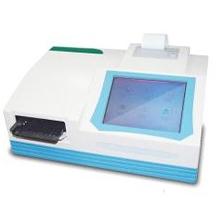
Key Factors Affecting the Sensitivity and Accuracy of ELISA Microplate Readers
This chart provides a comprehensive overview of the factors affecting the sensitivity and accuracy of ELISA microplate readers and offers solutions to improve performance.
| Factor | Impact on Sensitivity and Accuracy |
| Wavelength Calibration | Ensures precise detection of light absorbance or emission, minimizing errors. |
| Sensitivity Settings | High sensitivity enhances detection of low-concentration analytes, but excessive sensitivity can increase noise. |
| Optical System Performance | High-quality optics reduce light scattering and stray light, improving the ability to detect weak signals. |
| Temperature Control | Variations in temperature can affect enzyme activity and sample consistency, leading to inaccurate results. |
| Background Noise | Background noise reduces the signal-to-noise ratio, affecting the accuracy of measurements, especially at low concentrations. |
| Data Analysis Software | The accuracy of the data interpretation depends on the quality of the software used to process and analyze the results. |
| Reagents Quality and Stability | Poor-quality or degraded reagents can introduce variability and lead to inaccurate results. |
| Sample Volume and Consistency | Variations in sample volume or mixing can lead to inconsistent results. |
| Routine Maintenance | Dust, debris, and misalignment of optical components can impair accuracy over time. |
| Microplate Quality | Poor-quality plates with inconsistent well sizes or coatings can lead to inaccurate measurements. |
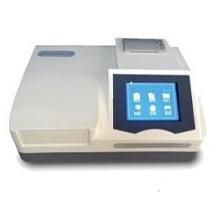
Key Strategies for Improving Sensitivity and Accuracy of ELISA Microplate Readers
1. Optimizing Instrument Calibration
Proper calibration is crucial to ensure that an ELISA microplate reader produces accurate results. Regular calibration against known standards should be performed to account for drift and errors that may occur over time. Calibration of key parameters like absorbance, wavelength, and optical pathlength ensures the reader maintains its accuracy and produces reproducible data.
- Wavelength Accuracy and Resolution: ELISA involves the use of different wavelengths depending on the assay type. Microplate readers with precise wavelength selection capabilities allow for more accurate detection of absorbance changes. It is essential to verify that the reader covers the exact wavelengths required by the ELISA protocol and provides high resolution to detect small absorbance differences accurately.
- Correct Pathlength Calibration: The pathlength of the light used in the detection process should be calibrated to ensure the measurements align with the expected absorbance values. Inaccuracies in pathlength can lead to incorrect quantification, particularly when measuring low-concentration samples.
2. Enhancing Sensitivity with Advanced Optics
To improve the sensitivity of the microplate reader, the optical system must be designed to detect even the smallest changes in light absorption. Using high-quality optical components such as precision lenses, high-sensitivity detectors, and advanced photodetectors helps capture faint signals more effectively.
- Photodiode or Photomultiplier Tube (PMT) Selection: The choice of photodetector affects the sensitivity of the reader. Photomultiplier tubes (PMTs) offer superior sensitivity, especially for low-light applications, while photodiodes may be suitable for moderate sensitivity requirements. Selecting the appropriate detector for your assay type ensures optimal performance.
- Minimizing Background Noise: Reducing the background noise is critical for improving sensitivity. High-quality filters and optical elements can help reduce unwanted light interference, which could obscure the detection of low-concentration analytes. Additionally, the design of the microplate reader should minimize any stray light entering the system.
3. Optimizing Plate Handling and Temperature Control
Proper handling of the ELISA plate is crucial for achieving consistent and accurate readings. Automated plate handling systems ensure that plates are placed correctly in the reader, and temperature fluctuations are minimized. Maintaining a consistent temperature is important because it affects the enzymatic reactions in the ELISA, ultimately impacting sensitivity and accuracy.
- Plate Orientation: Inaccurate plate placement or incorrect orientation can cause uneven light transmission through the wells, resulting in inconsistent readings. Ensuring that the plate is positioned correctly within the reader’s optical path helps achieve accurate and reproducible results.
- Temperature Control: Temperature can significantly impact enzyme activity, and fluctuations can result in inaccurate readings. Temperature control systems built into the microplate reader ensure that the reaction conditions remain constant, promoting optimal performance and accurate results.
4. Improving Data Analysis with Advanced Software
Modern ELISA microplate readers are equipped with sophisticated software that aids in data analysis. The software not only automates the measurement process but also helps in performing advanced calculations, curve fitting, and statistical analysis. To improve accuracy:
- Application of Advanced Calibration Curves: Advanced software allows for the generation of more precise calibration curves, accounting for various assay factors such as sample interference or reagent lot variation. Software-driven calibration ensures that results are accurate even when sample conditions change.
- Real-Time Data Processing: Real-time data analysis allows for the immediate identification of potential issues, such as outlier data or aberrant readings. This instant feedback enhances the reliability and accuracy of the results.
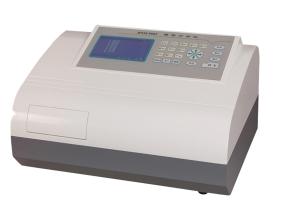
5. Choosing High-Quality Reagents
The quality of the reagents used in the ELISA can significantly impact the sensitivity and accuracy of the test. High-quality, well-characterized antibodies and substrates ensure that the assay performs optimally, reducing the risk of false positives or negatives.
- Use of Stable Reagents: Stability and consistency of reagents contribute to reproducible results. Ensure that reagents are stored correctly and are within their expiration dates to avoid variability that could affect the accuracy of the assay.
6. Minimizing Interference and Matrix Effects
In some cases, the sample matrix may contain substances that interfere with the ELISA signal, resulting in reduced sensitivity or inaccurate readings. Pre-treatment of samples to remove interfering substances can help achieve more reliable results.
- Sample Dilution and Pre-treatment: Diluting samples to appropriate concentrations or applying techniques such as filtration or centrifugation helps reduce matrix effects. This ensures that the microplate reader measures the true signal from the analyte of interest rather than interference from the sample matrix.
- Use of Blocking Agents: Blocking agents can be used to prevent non-specific binding, ensuring that the assay measures only the target analyte, which improves the accuracy of the results.
7. Regular Maintenance and Troubleshooting
Routine maintenance of the microplate reader helps prevent issues related to optical degradation, misalignment, and other mechanical problems. Ensuring the system is clean, free of dust, and well-calibrated helps extend its operational life and maintain consistent performance.
- Cleaning and Preventing Cross-Contamination: Contamination can lead to erroneous readings. Regular cleaning of optical components and wells of the microplate reader reduces the risk of cross-contamination between samples.
8. Optimizing Sample Handling
Accurate sample handling and preparation are also vital to achieving high-quality results.
- Consistent Sample Volume: Ensuring that all sample wells contain consistent volumes and that the samples are evenly mixed can reduce variability and improve the reproducibility of results.
- Avoiding Cross-Contamination: Preventing contamination between wells is essential for maintaining data integrity. Use of pipetting aids, such as multichannel pipettes, and proper technique can help avoid cross-contamination.
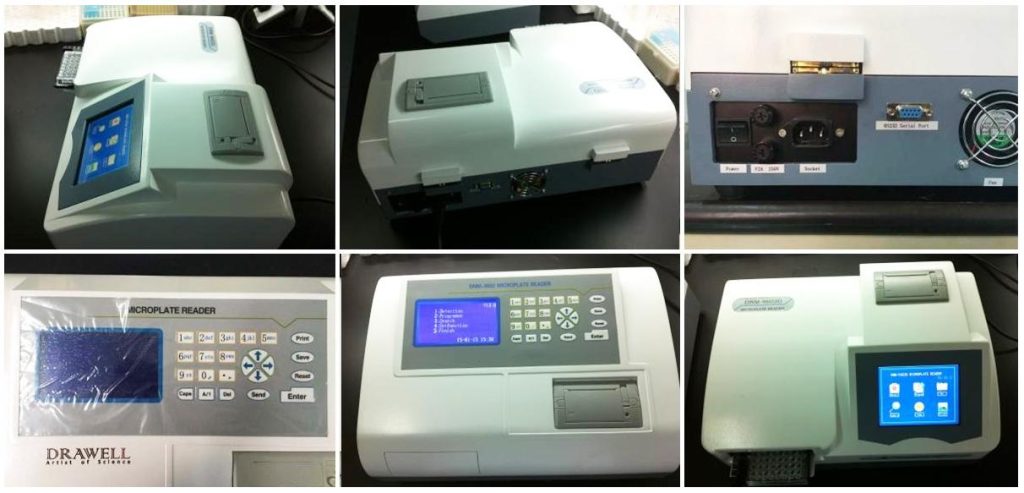
Conclusion
Improving the sensitivity and accuracy of ELISA microplate readers involves a multi-faceted approach. From optimizing instrument calibration and enhancing optical components to selecting high-quality reagents and ensuring precise sample handling, each step plays an important role in achieving reliable and reproducible results. Through incorporating these best practices for using ELISA microplate readers, laboratories can ensure that their ELISA assays provide the highest level of accuracy and sensitivity, leading to more reliable results and better decision-making in research and diagnostic applications.
